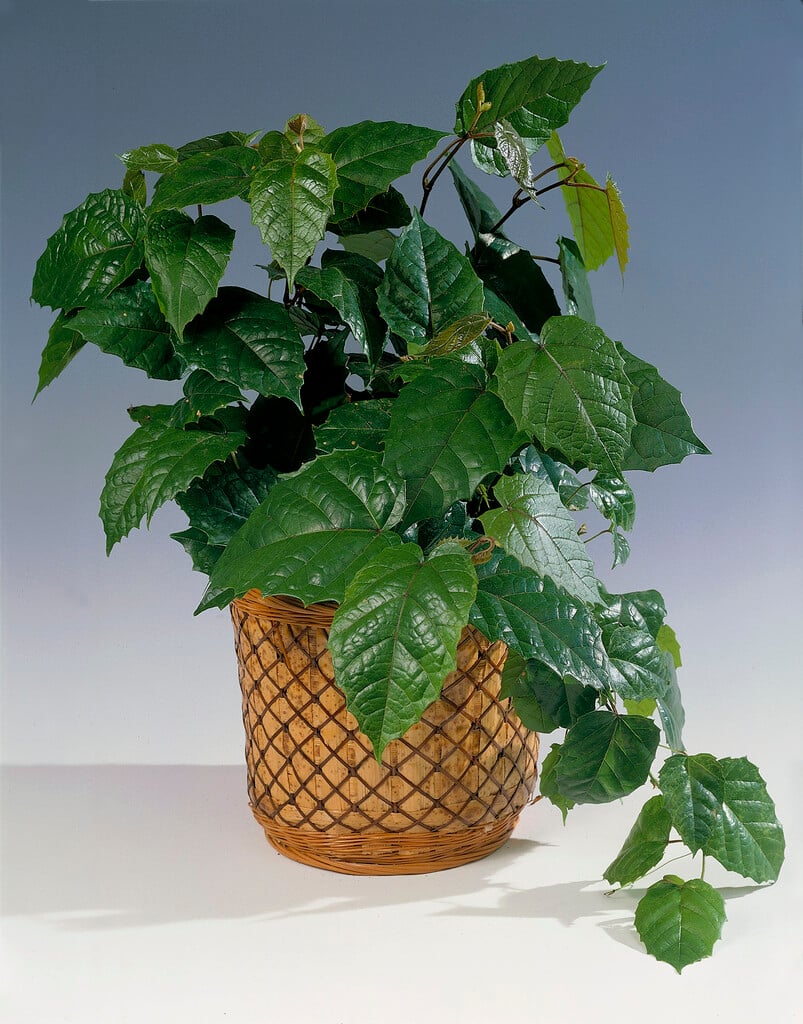Cissus antarctica
kangaroo vine
A vigorous, tropical evergreen climber with glossy, toothed, heart-shaped leaves. This species climbs using tendrils, but is often allowed to trail from a hanging basket. A good houseplant for a lightly shaded position
Size
Ultimate height
1.5–2.5 metresTime to ultimate height
2–5 yearsUltimate spread
1–1.5 metresGrowing conditions
Moisture
Moist but well–drainedpH
Acid, Alkaline, NeutralColour & scent
| Stem | Flower | Foliage | Fruit | |
| Spring | Green | |||
|---|---|---|---|---|
| Summer | Green | |||
| Autumn | Green | |||
| Winter | Green |
Position
- Partial shade
Aspect
East–facing or South–facing or West–facing
Exposure
Sheltered Hardiness
H1CBotanical details
- Family
- Vitaceae
- Native to GB / Ireland
- No
- Foliage
- Evergreen
- Habit
- Climbing
- Genus
Cissus can be perennials, shrubs or climbers, sometimes with succulent stems or rootstocks, and with simple or palmately lobed or divided, evergreen leaves and clusters of insignificant flowers followed by small berries
- Name status
Correct
- Plant range
- Australasia
How to grow
Cultivation
Grow in pots of peat-free, loam-based compost in bright, filtered light. Mist daily to increase humidity. Water freely while in growth and apply a balanced liquid feed monthly; water sparingly in winter. Pot on every 2-3 years and top dress in spring
Propagation
Propagate by semi-ripe cuttings in summer
Suggested planting locations and garden types
- Houseplants
- Patio and container plants
- hanging basket
- Conservatory and greenhouse
Pruning
See pruning group 11; pinch out young plants to encourage bushiness
Pests
May be susceptible to glasshouse red spider mite, glasshouse whitefly and mealybugs
Diseases
Generally disease-free
Get involved
The Royal Horticultural Society is the UK’s leading gardening charity. We aim to enrich everyone’s life through plants, and make the UK a greener and more beautiful place.
